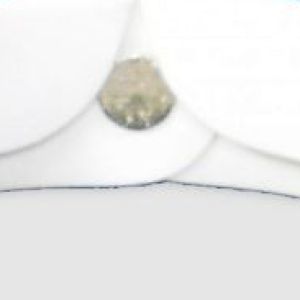How to Use Your Ear Gauging PlugsPosted by johnhrq on July 25th, 2019 Stretching ear lobes is becoming more and more popular. With all of the jewelry options and sizes, it’s a fun process to stretch your ears to fit the perfect plug. Before you pick up a set of Ear Gauging Plugs start trying to stretch your ears, there are a few things to consider. Let’s start with the basics. First of all, the jewelry worn in stretched ears are known as plugs if they are solid and tunnels if they are hollow. Gauge refers to the size of the plug, though the term is colloquially used to describe the jewelry as well.
The Gauge system can be a little confusing to understand, and it dates back hundreds of ears to the original methods for creating wire. To make wire thinner, it was passed through progressively smaller holes. Each hole the wire passed through squeezed it and made it thinner. The number of holes a wire passed through determined its final size and was called its gauge. Because of this system, high numbered gauges are actually smaller than low numbered gauges. While wires are used for industrial purposes and need to have extremely exact sizes, body jewelry tends to experience some variation. Two brands might make plugs with the same listed gauge size, but it’s likely that one set will be slightly larger or smaller than the other. To add to this confusion, you also need to be careful with your stretching sizes. Going from a 4g to a 2g is only a 1mm stretch, but going from 2g to 0g is a 2mm stretch. Before moving up a size, it’s important to double check the dimensions so you know exactly what you’re in for. So now that you have a grip on sizing, it’s time to start stretching. Most people are going to have their ears started with a standard piercing gun. These guns typically use a needle around 18g to 16g. Once that piercing has fully healed, typically 4-6 months, you can start stretching. Once your piercing is healed, the best place to start is with a taper. These cone shaped plugs will gradually stretch your piercing. For a fresh piercing, a 16g taper is a good start. If you have already worn earrings in the piercing for a while, you will probably be safe jumping straight to a 14g taper. To insert your taper, wash the jewelry and your hands, lubricate the taper, and slowly insert it into the piercing. The process should not be painful but it might take a few minutes. Small tapers can be worn as jewelry using o rings to secure them in place or can be passed through the piercing, followed immediately by your ear gauging plugs. When you reach larger sizes, tapers should not be worn as jewelry because they will apply uneven pressure to the earlobe. It’s a good practice to wait over a month before going up a size to give your ears time to adjust. When you move to the next size, resist the urge to skip to something larger. It’s important to stretch your ears gradually. A set of ear gauging plugs should include all of the sizes you need to stretch to your desired gauge. Once you reach sizes larger than 00g, you can start wrapping your plugs in a few wraps of tape every couple of weeks to gradually continue stretching them. The most important thing to remember when stretching your ears is to constantly check them and ensure the health of your earlobes. Pain, redness, and swelling is a sign of potential infection and should be addressed immediately. Stay safe and visit King’s Body Jewelry if you need any supplies to start your ear stretching journey. For more information about Septum Piercing Jewelry and Double Flared Plugs Please visit : Kings Body Jewelry. Like it? Share it!More by this author |



